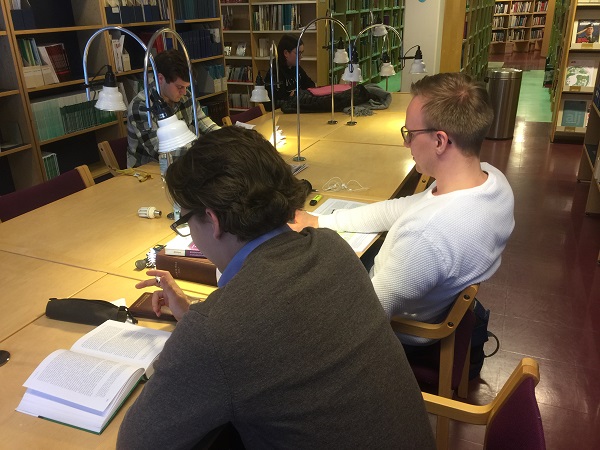Edn leading to a higher degree increases
Published : 20 Apr 2017, 01:06
About 130,000 students attended education leading to a university of applied sciences degree and 11,000 students education leading to a higher university of applied sciences degree in 2016, according to Statistics Finland's Education Statistics.
The number of university of applied sciences degrees completed was 23,200 and that of higher university of applied sciences degrees 2,500. The number of students in education leading to a higher university of applied sciences degree grew by eight per cent and the number of degrees by six per cent.
It has been possible to study for a university of applied sciences degree in education arranged as daytime or multiform studies from 2015 onwards. In 2016 a total of 105,100 students studied in daytime programmes and 24,700 in multiform programmes.
Fifty-two per cent of the students attending education leading to a university of applied sciences degree and 65 per cent of the students attending education leading to a higher university of applied sciences degree were women.
At 30 per cent of all students, there were most students in education leading to a university of applied sciences degree in the female-dominated field of health and welfare. In all, 84 per cent of them were women. The field of engineering, manufacturing and construction was the second biggest, where 24 per cent of students were studying. The third biggest was the field of business, administration and law, where around one-fifth of university of applied sciences students were studying.
The number of students was highest in education leading to a higher university of applied sciences degree in the field of health and welfare, one-third of all students. Every fourth student studied in the field of business, administration and law and every fifth student in the field of engineering, manufacturing and construction.
The number of students was highest at Helsinki Metropolia University of Applied Sciences, 16,600, and the second highest at Haaga-Helia University of Applied Sciences, 10,400. The next most students were studying at Tampere and Turku Universities of Applied Sciences, over 9,500 in both. The smallest universities of applied sciences were Åland University of Applied Sciences, which had 563 students, and the Police University College with 565 students.
Of university of applied sciences degrees, most degrees were completed in the field of health and welfare, 34 per cent. Eighty-eight per cent of them were completed by women. The second most degrees were completed in the field of business, administration and law, 21 per cent. Good two-thirds of these degrees were completed by women. The number of degrees completed was the third highest, 20 per cent, in the field of engineering, manufacturing and construction. Of them, four out of five were completed by men. Sixty-two per cent of all university of applied sciences degrees were completed by women.
The number of higher university of applied sciences degrees completed was highest in the field of health and welfare, 38 per cent, and the second highest in the field of business, administration and law, 23 per cent. Women completed 69 per cent of all higher university of applied sciences degrees.


